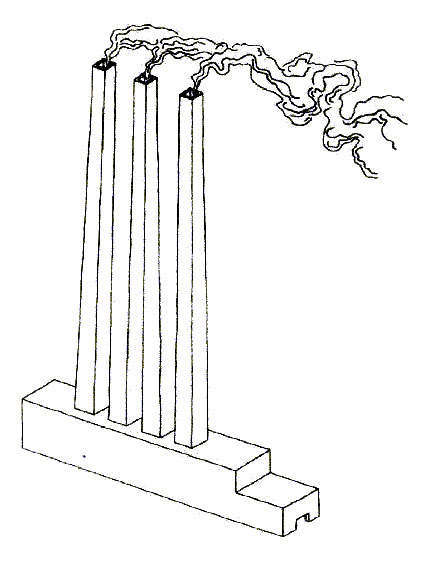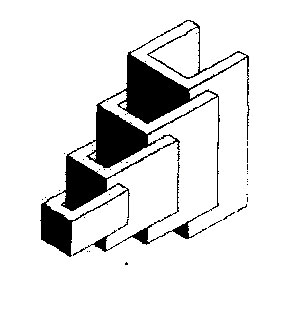"PERSPECTIVE
JAPONAISE" OF OSCAR REUTERSVARD:
CRITICAL HARDLY-STABILITY OF STATIONARY STATES ROLE OF THE CRITICALLY
SELF-ORGANIZED STATES
OF A BRAIN IN CREATIVITY"
32 Severny Venetz, Ulyanovsk, 432027, Russia; brazhe@ulstu.ru
The stationary states can be steady and unstable. For example, the ground state of a valence electron in atom is steady, its other (exited) states are unstable. Yevin (Yevin I., 2001, pp. 67 - 76) are adduced a lot of examples steady and unstable states from area of painting and literature. For example, in Picasso's "A girl on a ball " the composite equilibrium is reached by the confrontation of unstable balance of the delicate girl, standing on a ball, and the stable state of the athlete, sitting on a cube. In the Shakespeare's tragedy "Hamlet" the unstable state of king Claudius remains through the whole play and is balanced by Gertrude and Hamlet actions. But in a whole such triangle is metastable and cannot exist for a long time. Its state is hardly stable and critical. This maintains the great internal dramatic tension of the play.
The distinctive particular case of multiplicity of critical stationary states of open systems - polymodality - is bimodality. In the mentioned Yevin's book a lot of instances of this kind are given. In physics it is for example iron ferromagnetic and paramagnetic states that undergo reciprocal transfers at a Curie temperature. In Gogol's "Auditor" it is the bimodality of Khlestakov image. M. Escher widely used bimodal states to create logically impasses in his engravings.
The great master
of the critical hardly stationary states is the Swedish artist Oscar Reutersvard
(born in 1915). His impossible figures built in exotic, by his own definition,
Japanese perspective (in Fr. perspective japonaise) sometimes "twist
the mind" harder than complex constructions by Escher (Fig. 1,2).
 |
Fig.
1. O. Reutersvard. Perspective japonaise N LXXI.
|
A well-known art theorist R. Arnheim claims that the tendency towards the stability of the physiological processes in brain cortex lays in the basis of the composite equilibrium (Arnheim, 1969). ). It is an echo of the old concept of homeostasis, which is supposed to be a normal state for all living system. P. Bak, pioneer of the self-organized criticality paradigm has shown that this regime is natural for brain functioning (Bak, 1996). The experimental evidence of the fact was given by Kelso (Kelso, 1995). He found the phenomenon of critical delay in the brain activity of people, who concurrently performed sensomotoric acts . It turns out to be that brain in the critical state can produce metastable patterns and perform a selective connection to them. Founding father of synergetics, Haken, has shown that it allows a brain to process incoming signals (Haken, 1996).
 |
Fig.
2. O. Reutersvard. Perspective japonaise N 476af.
|
The critical self-organized states of the working brain naturally superimpose the impression on creativity. Therefore in works of art so frequently there are elements of stability - instability - criticality. Reutersvard's works are particularly bright in this respect.
References:
Arnheim R. (1974) Art and Visual Perception, Moscow: Progress [in Russian].
Bak P. (1996) How Nature Works, New York: Copernicus.
Haken H. (1996) Principles of Brain Function, Berlin: Springer.
Kelso J.A.S. (1995) Dynamic Patterns: The Self-Organization of Brain and Behaviour, MIT Press, p. 334.
Reutersvard O. (1993) Impossible Figures, Moscow: Center of Modern Art. Architectural Gallery [in Russian].
Yevin I. (2001) Synergetics of a Brain and Synergetics of Art, Moscow: GEOS [in Russian].